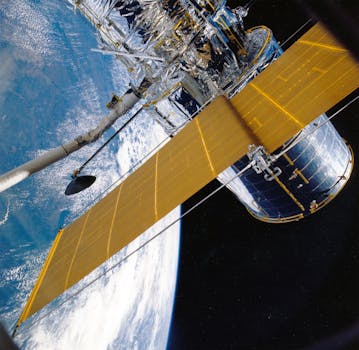From Geostationary to Low Earth Orbit: The Evolution of Satellite Telecommunications in 2023
The satellite telecommunications industry has undergone significant changes in recent years, with a shift from geostationary to low Earth orbit satellites. This article explores the evolution of satellite telecommunications in 2023, including the benefits and challenges of low Earth orbit satellites.

From Geostationary to Low Earth Orbit: The Evolution of Satellite Telecommunications in 2023
Satellite telecommunications have come a long way since the launch of the first commercial geostationary satellite in 1965. For decades, geostationary satellites have been the backbone of the industry, providing a wide range of services including television broadcasting, telecommunications, and navigation. However, in recent years, the industry has undergone a significant shift towards low Earth orbit (LEO) satellites. In this article, we will explore the evolution of satellite telecommunications in 2023, including the benefits and challenges of LEO satellites.
Introduction to Geostationary Satellites
Geostationary satellites are placed in a geostationary orbit, which is approximately 36,000 kilometers above the equator. At this altitude, the satellite’s orbital period is the same as the Earth’s rotational period, allowing it to remain stationary in the sky. Geostationary satellites have been used for a wide range of applications, including television broadcasting, telecommunications, and weather forecasting. They offer a number of benefits, including global coverage, high bandwidth, and reliability.
The Rise of Low Earth Orbit Satellites
In recent years, there has been a significant shift towards LEO satellites. LEO satellites are placed in a low Earth orbit, which is typically between 160 and 2,000 kilometers above the Earth’s surface. LEO satellites have a number of benefits, including lower latency, higher bandwidth, and lower costs compared to geostationary satellites. They are also more suitable for real-time applications, such as video conferencing and online gaming. Companies such as SpaceX, OneWeb, and Amazon’s Kuiper Systems are leading the charge in the development of LEO satellite constellations.
Benefits and Challenges of Low Earth Orbit Satellites
LEO satellites offer a number of benefits, including lower latency, higher bandwidth, and lower costs. They are also more suitable for real-time applications, such as video conferencing and online gaming. However, LEO satellites also pose a number of challenges, including the need for a larger number of satellites to provide global coverage, the risk of interference with other satellite systems, and the need for advanced propulsion systems to maintain orbit. Despite these challenges, the use of LEO satellites is expected to continue to grow in the coming years, driven by the increasing demand for high-speed, low-latency connectivity.
Conclusion
In conclusion, the satellite telecommunications industry has undergone significant changes in recent years, with a shift from geostationary to LEO satellites. LEO satellites offer a number of benefits, including lower latency, higher bandwidth, and lower costs. However, they also pose a number of challenges, including the need for a larger number of satellites to provide global coverage and the risk of interference with other satellite systems. As the industry continues to evolve, it is likely that we will see the development of new technologies and applications that take advantage of the benefits of LEO satellites.





